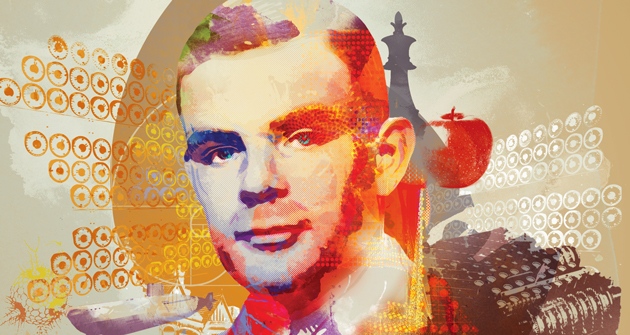We have a lot to be thankful for today that we owe to Alan Turing – who is generally recognised as among the first, if not the first, computer scientist. But, on the other hand, we also have a lot that we can trace back to Turing that we should be in no way grateful for as it has filled our minds with stupidities and our universities with people talking nonsense. Without detracting from Turing’s undoubtedly important achievements we here focus on the latter and how some of Turing’s ideas came to infect the human sciences in general and economics in particular.See also:
Alan Turing: Pre-Internet Troll
Perhaps there is some irony in the fact that one of the men responsible for the invention of the modern computer was also an insufferable troll who seems to have persistently engaged in acts that were designed to disturb the emotional equilibrium of those around him. Turing’s biographer Andrew Hodges relates one of these incidents which highlights well Turing’s charmingly knavish nature:
Alan was holding forth on the possibilities of a ‘thinking machine’. His high-pitched voice already stood out above the general murmur of well-behaved junior executives grooming themselves for promotion within the Bell corporation. Then he was suddenly heard to say: “No,I’m not interested in developing a powerful brain. All I’m after is a mediocre brain, something like the President of American Telephone & Telegraph Company”. The room was paralysed while Alan nonchalantly continued to explain how he imagined feeding in facts on prices of commodities and stocks and asking the machine the question “Do I buy or sell”?It seems that it is in this vein that we should read his seminal 1950 paper ‘Computing Machinery and Intelligence’. What Turing was ostensibly dealing with in this paper was whether or not a computer could be said to “think”. However, at the very beginning of the paper Turing redefines “think” to simply mean that a computer might imitate a human being so perfectly that the person cannot distinguish between the computer and another human being. This, of course, is not the typical manner in which to discern if someone or something is thinking, however we shall consider this point in more depth later on. For now let us simply examine what Turing was doing.
In the paper Turing proposed what came to be known as the “Turing test”. In this test a person would sit in front of two curtains, behind one is a computer and behind the other is another person. The person in front of the curtains would then communicate with the two mystery entities using a keyboard and a screen. Finally they would try to discern which of the entities is human and which is machine.
There is a strong element of trolling manifest in this thought experiment. Turing begins the paper in question by trying to set the reader off-balance by making the case that if you put a man and a woman behind the curtains most people would not be able to guess which is which if the man wants to trick the person guessing. Turing then goes on to make the even more disconcerting proposition that if we replace either the man or the woman with a machine we still might not be able to tell them apart. His account is altogether unsettling – and one gets the distinct impression that this is purposefully so....MUCH MORE
From Nature's Turing special issue:
Big Brains: "Turing at 100: Legacy of a universal mind"

ANDY POTTS; TURING FAMILY
and "Artificial Intelligence: Why There is No Reason to Fear The Singularity/HAL 9000"